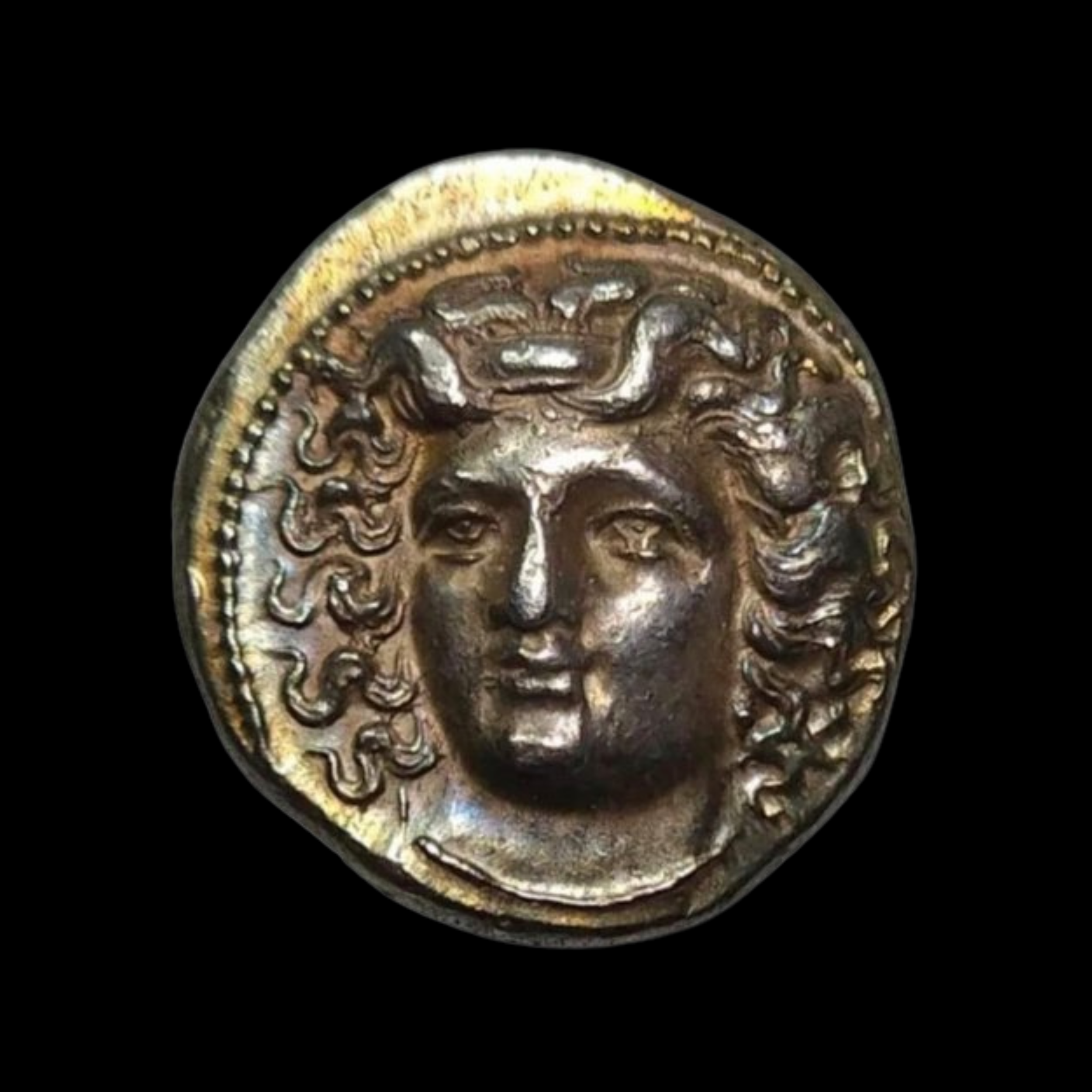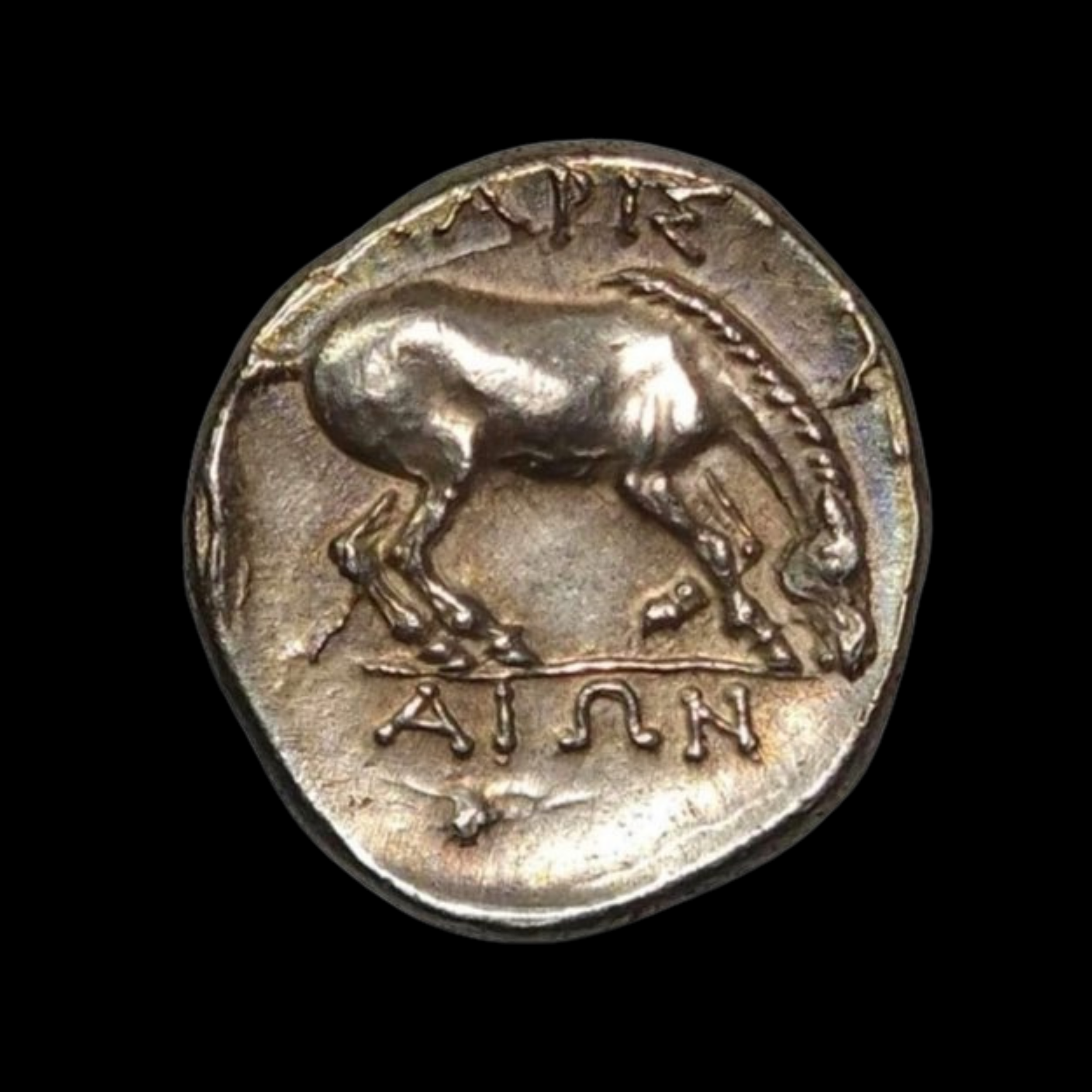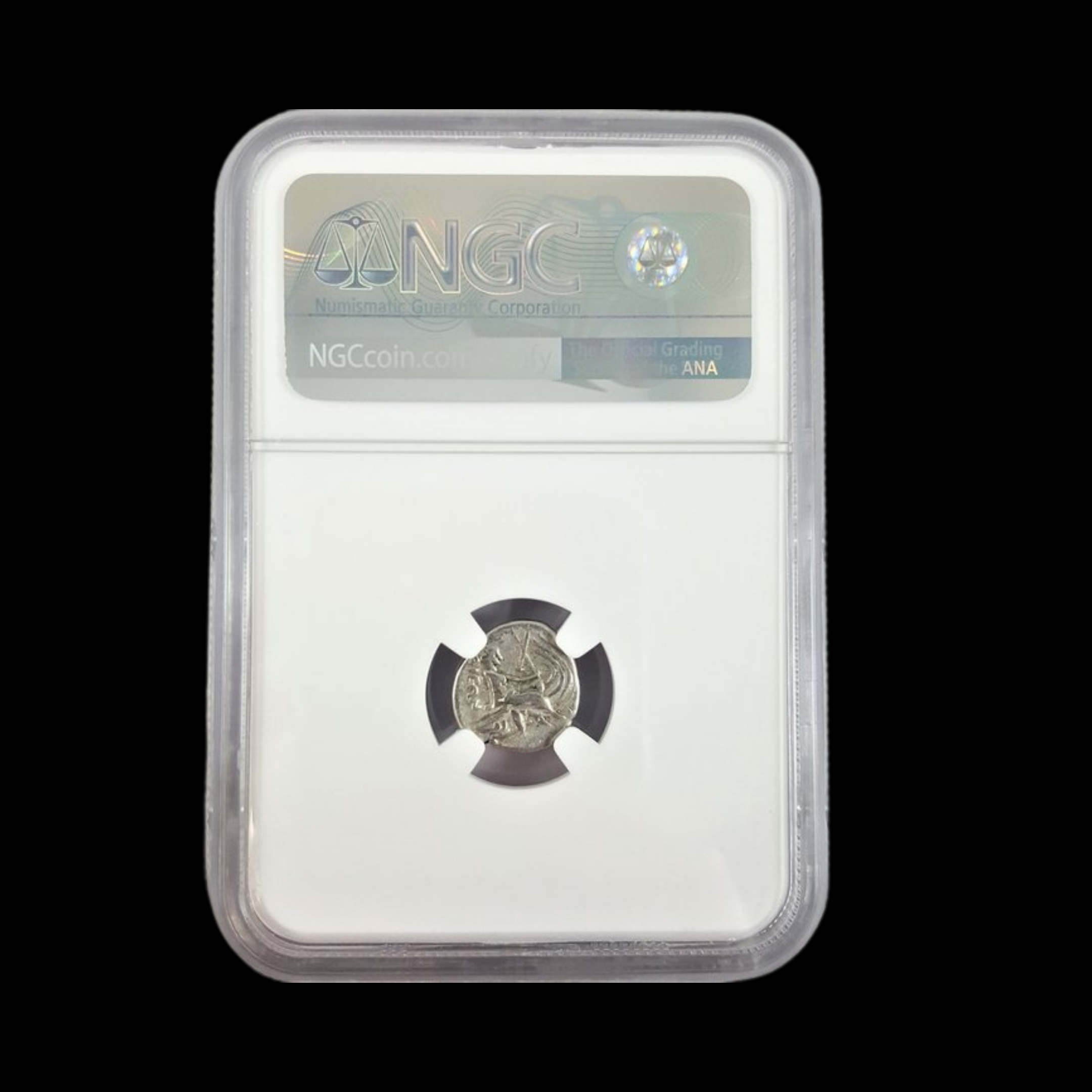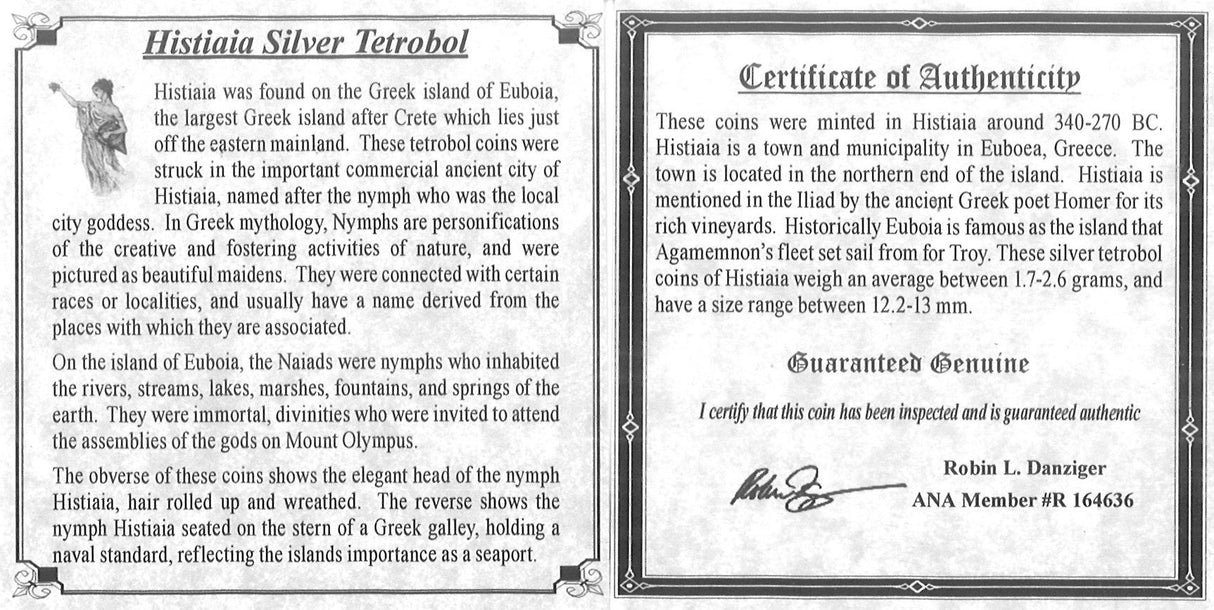 Image 1 of 2
Image 1 of 2

 Image 2 of 2
Image 2 of 2



Silver Drachm from Larissa, Thessaly (2,300 years ago)
This silver drachm was minted in Larissa, one of the leading cities of ancient Thessaly, during a period of relative independence and prosperity. The coin represents the artistic and economic achievements of this northern Greek city (modern central Greece) in the mid-4th century BCE.
Coin Description:
Front side: Profile of the nymph Larissa facing left, her hair bound in a ribbon, with fine classical Greek features portrayed in detailed relief
Back side: Horse grazing or preparing to roll on the ground, with "ΛΑΡΙΣΑΙΩΝ" (of the Larissaeans) inscribed above or around the design
Technical Details:
Material composition: Silver (high purity)
Denomination: Drachm (standard trade unit in ancient Greece, representing approximately a day's wage)
Catalog/reference numbers: BCD Thessaly 1149, SNG Copenhagen 122
Certification/grade: EF (Extremely Fine), with lustrous surfaces and minimal wear
Date/period of minting: 365-356 BCE during Thessalian League period
Weight: 6.08 grams
Historical Significance: This coin was struck during a brief window when Thessalian cities enjoyed political autonomy between periods of Macedonian domination, representing local civic pride and economic vitality. Larissa was famous for its horse breeding traditions, which explains the equine imagery that became a signature design element on their coinage (the Thessalian plain in northern Greece was ideal for raising horses). In the Greek monetary system, drachms were valuable everyday coins that facilitated regional trade and commercial transactions between Greek city-states.
This silver drachm was minted in Larissa, one of the leading cities of ancient Thessaly, during a period of relative independence and prosperity. The coin represents the artistic and economic achievements of this northern Greek city (modern central Greece) in the mid-4th century BCE.
Coin Description:
Front side: Profile of the nymph Larissa facing left, her hair bound in a ribbon, with fine classical Greek features portrayed in detailed relief
Back side: Horse grazing or preparing to roll on the ground, with "ΛΑΡΙΣΑΙΩΝ" (of the Larissaeans) inscribed above or around the design
Technical Details:
Material composition: Silver (high purity)
Denomination: Drachm (standard trade unit in ancient Greece, representing approximately a day's wage)
Catalog/reference numbers: BCD Thessaly 1149, SNG Copenhagen 122
Certification/grade: EF (Extremely Fine), with lustrous surfaces and minimal wear
Date/period of minting: 365-356 BCE during Thessalian League period
Weight: 6.08 grams
Historical Significance: This coin was struck during a brief window when Thessalian cities enjoyed political autonomy between periods of Macedonian domination, representing local civic pride and economic vitality. Larissa was famous for its horse breeding traditions, which explains the equine imagery that became a signature design element on their coinage (the Thessalian plain in northern Greece was ideal for raising horses). In the Greek monetary system, drachms were valuable everyday coins that facilitated regional trade and commercial transactions between Greek city-states.
This silver drachm was minted in Larissa, one of the leading cities of ancient Thessaly, during a period of relative independence and prosperity. The coin represents the artistic and economic achievements of this northern Greek city (modern central Greece) in the mid-4th century BCE.
Coin Description:
Front side: Profile of the nymph Larissa facing left, her hair bound in a ribbon, with fine classical Greek features portrayed in detailed relief
Back side: Horse grazing or preparing to roll on the ground, with "ΛΑΡΙΣΑΙΩΝ" (of the Larissaeans) inscribed above or around the design
Technical Details:
Material composition: Silver (high purity)
Denomination: Drachm (standard trade unit in ancient Greece, representing approximately a day's wage)
Catalog/reference numbers: BCD Thessaly 1149, SNG Copenhagen 122
Certification/grade: EF (Extremely Fine), with lustrous surfaces and minimal wear
Date/period of minting: 365-356 BCE during Thessalian League period
Weight: 6.08 grams
Historical Significance: This coin was struck during a brief window when Thessalian cities enjoyed political autonomy between periods of Macedonian domination, representing local civic pride and economic vitality. Larissa was famous for its horse breeding traditions, which explains the equine imagery that became a signature design element on their coinage (the Thessalian plain in northern Greece was ideal for raising horses). In the Greek monetary system, drachms were valuable everyday coins that facilitated regional trade and commercial transactions between Greek city-states.
Larissa (/ləˈrɪsə/; Greek: Λάρισα, Lárisa, pronounced [ˈlarisa] ⓘ) is the capital and largest city of the Thessaly region in Greece. It is the fifth-most populous city in Greece with a population of 148,562 in the city proper, according to the 2021 census.[2] It is also capital of the Larissa regional unit. It is a principal agricultural centre and a national transport hub, linked by road and rail with the port of Volos, the cities of Thessaloniki and Athens. The municipality of Larissa has 164,095 inhabitants, while the regional unit of Larissa reached a population of 268,963 (in 2021[update]).[2]
Legend has it that Achilles was born here. Hippocrates, the "Father of Medicine", died here. Today, Larissa is an important commercial, transportation, educational, agricultural and industrial centre of Greece. The city straddles the Pineios river and N.-NE. of the city are the Mount Olympus and Mount Kissavos.
According to Greek mythology it is said that the city was founded by Acrisius, who was killed accidentally by his grandson, Perseus.[3] There lived Peleus, the hero beloved by the gods, and his son Achilles.
You Might Also Like


















